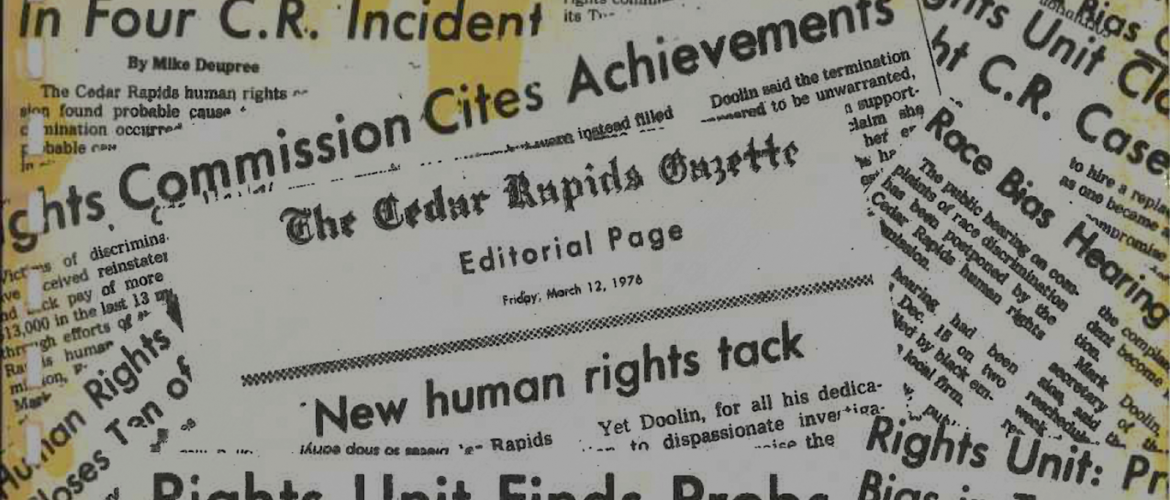The Crisis
All over the world, there are people struggling to make ends meet. Not everyone is fortunate enough to have a place to call home for a variety of reasons. One that sticks out above the rest is money. Many people cannot afford to live in a big house or even a tiny apartment. This is a problem that has always existed all over the world, even in Iowa.
Beginning in 1979 and continuing throughout the 1990’s, Luther Trent played a significant role in providing opportunities for people who faced this problem. He started with changes to the Cedar Rapids housing code and worked with numerous organizations including Habitat for Humanity and the Metro Area Housing Program, creating more options for low-income housing in the Cedar Rapids area.
Low-income describes a family that earns less than twice the federal poverty line.
Housing Code
In the Summer of 1979, Luther Trent was involved in drafting a new housing code for the city of Cedar Rapids. He was working with the Hawkeye Area Community Action Program’s (HACAP) Housing Code Revision Committee. It had been sixty years since the housing code was last revised, and the new code was replacing a “bad, bad code” that was “old, feeble, [and] almost dead.”
A housing code is a set of rules that every home must follow before a family can move in. Housing codes exist so that families will be safe and healthy in their homes.
Luther Trent’s goal was to represent “the truly low-income,” and to make sure they had every opportunity they could to live comfortably and safely. This is important for low-income families because they are more likely to be in a situation where they cannot afford to buy a house that meets all of these requirements. The new housing code made it a law that a house must meet all of the health and safety requirements in order for someone to move in. It was enforced on January 1, 1981, but this was not the end of Trent’s work with low-income housing.

Article written by Ken Sullivan in March 21, 1980 newspaper. Click here to view full transcription.
Tenant-Landlord Partnership Program
An important part of renting a house or apartment is the relationship between the tenant and the landlord. In this relationship, the landlord has authority over the tenant, which can make it difficult to get along well. Luther Trent thought it was important for tenants and landlords to treat each other with respect and kindness.
A tenant is a person who pays rent to live in a house or apartment. They do not own the space that they are renting. The tenant pays rent to the landlord.
With the Metro Area Housing Program (MAHP), Trent worked on the Tenant-Landlord Partnership Program (TLPP) to help create more positive interactions between landlords and their tenants. The TLPP consisted of three two-hour class sessions. Each session included presentations by professionals. They explained how to find an affordable place to live and how to go about renting or buying it.
A landlord is a person who owns a house, apartment, or other space, and rents it out to other people. The landlord collects rent money from the tenant.
These sessions were incredibly helpful for people who had no background knowledge on buying or renting homes. The sessions were free, and attendees also received the TLPP Manual, which covered all of the topics discussed so they could look back at them in the future.
Transitional Housing & Habitat for Humanity
Luther Trent was involved in multiple other projects focused on providing housing for low-income families. One of these projects was HACAP’s Traditional Housing for Homeless Rural American Families. With the HACAP, Luther Trent found and renovated old, abandoned homes in Linn County so homeless families could live in them as they looked for their own homes.

Excerpt from HACAP’s “Transitional Housing for Homeless Rural America Families” pamphlet. Click here to view full transcription.
Luther Trent also helped bring Habitat for Humanity to Cedar Rapids. By building new homes with help from volunteers, this international organization works to provide housing for everyone. It is clear that Luther Trent truly cared about the well-being of low-income families in Cedar Rapids. He dedicated much of his adult life to finding and developing affordable housing.
NAACP & Other Committees
Because he was so invested in affordable housing, Luther Trent served on housing committees for most of the organizations that he was a part of. The National Association for the Advancement of Colored People (NAACP) is one example. Included below is a description of the committee and a list of the duties that Trent was responsible for as a member of the housing committee with the NAACP. Trent was also a member of housing committees with other organizations, such as the Affordable Housing Commission (AHC) and the Hawkeye Area Community Action Program (HACAP). The outline below helps to understand what Trent did with the other groups as well.

NAACP Housing Committee Duties Pg. 2. Click here to view full transcription (both pages).

